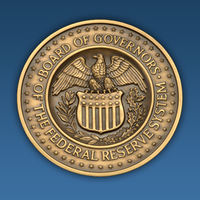Navigating the Economic Storm: Lessons from the Fed and Market Movements
June 19, 2025, 5:54 pm
In the world of finance, the Federal Reserve is like a ship captain navigating through turbulent waters. The waves of economic downturns can be fierce, and the decisions made by the Fed can either steer the ship to safety or send it crashing against the rocks. Recent discussions, particularly those by financial commentator Jim Cramer, highlight the importance of understanding these economic currents.
Cramer, a seasoned navigator of Wall Street, has witnessed several market storms over his 40-year career. He recalls moments when he advised investors to abandon ship. Each time, he learned valuable lessons about the Fed's role in these economic tempests. His reflections serve as a compass for investors trying to chart their course through uncertain waters.
In 1987, Cramer urged investors to sell everything before the infamous Black Monday. The market plummeted, and those who heeded his advice avoided disaster. Fast forward to 1998, when the Long-Term Capital Management crisis threatened to sink the financial system. Cramer felt the tremors and advised caution. Yet, the Fed intervened with an emergency rate cut, averting a catastrophe. This was a pivotal moment for Cramer. He realized that even when the Fed appears oblivious, it can act decisively.
However, not all storms have been weathered successfully. The 2008 financial crisis stands as a stark reminder of the Fed's missteps. Cramer observed that the central bank raised rates while the economy was already faltering. By the time the Fed recognized the severity of the situation, it was too late. Major firms had collapsed, and the financial landscape was in ruins. Cramer’s advice to move to cash during this period was met with skepticism, yet it proved to be a lifeline for many.
The lessons from these downturns are clear. Understanding the Fed's actions is crucial. When the central bank holds rates steady, as it did recently, it sends ripples through the market. The 10-year Treasury yield remained stable at 4.391% following the Fed's decision to maintain interest rates. This stability reflects a cautious approach, as the Fed grapples with mixed signals from the economy.
Inflation concerns loom large. The Fed's forecast now includes expectations for two rate cuts this year, but it also acknowledges rising inflation. This duality creates a delicate balancing act. The Fed is like a tightrope walker, trying to maintain equilibrium while navigating the risks of stagflation. The recent comments from Fed Chair Jerome Powell indicate a wait-and-see approach. The central bank is observing the effects of tariffs and their potential impact on inflation and employment.
Market participants are keenly aware of these dynamics. The CME FedWatch Tool suggests that investors are pricing in two quarter-point rate cuts later this year. This anticipation reflects a broader sentiment that the Fed may need to act to stimulate growth. Yet, the uncertainty surrounding inflation and job markets complicates the picture.
As we navigate these economic waters, it’s essential to remain vigilant. The bond market's recent fluctuations, influenced by disappointing housing data and jobless claims, serve as reminders of the interconnectedness of economic indicators. A slight misstep can send yields tumbling or soaring, impacting everything from mortgages to corporate borrowing.
Investors must also consider the broader implications of the Fed's decisions. The central bank's actions ripple through the economy, affecting consumer confidence and spending. When rates are low, borrowing becomes cheaper, encouraging investment and growth. Conversely, high rates can stifle economic activity, leading to a slowdown.
In this landscape, Cramer's insights are invaluable. His experiences underscore the importance of staying informed and adaptable. Investors should not only react to market signals but also understand the underlying causes. The Fed's decisions are not just numbers on a page; they are the lifeblood of the economy.
As we look ahead, the lessons from past downturns remind us to prepare for the unexpected. The economic landscape is ever-changing, and the Fed's role will continue to evolve. Investors must remain agile, ready to adjust their strategies as new information emerges.
In conclusion, navigating the economic storm requires a keen understanding of the forces at play. The Fed, like a ship captain, must make tough decisions in the face of uncertainty. Investors, too, must be prepared to weather the waves. By learning from past experiences and staying informed, we can chart a course toward financial stability. The journey may be fraught with challenges, but with the right knowledge, we can navigate the stormy seas of the market.
Cramer, a seasoned navigator of Wall Street, has witnessed several market storms over his 40-year career. He recalls moments when he advised investors to abandon ship. Each time, he learned valuable lessons about the Fed's role in these economic tempests. His reflections serve as a compass for investors trying to chart their course through uncertain waters.
In 1987, Cramer urged investors to sell everything before the infamous Black Monday. The market plummeted, and those who heeded his advice avoided disaster. Fast forward to 1998, when the Long-Term Capital Management crisis threatened to sink the financial system. Cramer felt the tremors and advised caution. Yet, the Fed intervened with an emergency rate cut, averting a catastrophe. This was a pivotal moment for Cramer. He realized that even when the Fed appears oblivious, it can act decisively.
However, not all storms have been weathered successfully. The 2008 financial crisis stands as a stark reminder of the Fed's missteps. Cramer observed that the central bank raised rates while the economy was already faltering. By the time the Fed recognized the severity of the situation, it was too late. Major firms had collapsed, and the financial landscape was in ruins. Cramer’s advice to move to cash during this period was met with skepticism, yet it proved to be a lifeline for many.
The lessons from these downturns are clear. Understanding the Fed's actions is crucial. When the central bank holds rates steady, as it did recently, it sends ripples through the market. The 10-year Treasury yield remained stable at 4.391% following the Fed's decision to maintain interest rates. This stability reflects a cautious approach, as the Fed grapples with mixed signals from the economy.
Inflation concerns loom large. The Fed's forecast now includes expectations for two rate cuts this year, but it also acknowledges rising inflation. This duality creates a delicate balancing act. The Fed is like a tightrope walker, trying to maintain equilibrium while navigating the risks of stagflation. The recent comments from Fed Chair Jerome Powell indicate a wait-and-see approach. The central bank is observing the effects of tariffs and their potential impact on inflation and employment.
Market participants are keenly aware of these dynamics. The CME FedWatch Tool suggests that investors are pricing in two quarter-point rate cuts later this year. This anticipation reflects a broader sentiment that the Fed may need to act to stimulate growth. Yet, the uncertainty surrounding inflation and job markets complicates the picture.
As we navigate these economic waters, it’s essential to remain vigilant. The bond market's recent fluctuations, influenced by disappointing housing data and jobless claims, serve as reminders of the interconnectedness of economic indicators. A slight misstep can send yields tumbling or soaring, impacting everything from mortgages to corporate borrowing.
Investors must also consider the broader implications of the Fed's decisions. The central bank's actions ripple through the economy, affecting consumer confidence and spending. When rates are low, borrowing becomes cheaper, encouraging investment and growth. Conversely, high rates can stifle economic activity, leading to a slowdown.
In this landscape, Cramer's insights are invaluable. His experiences underscore the importance of staying informed and adaptable. Investors should not only react to market signals but also understand the underlying causes. The Fed's decisions are not just numbers on a page; they are the lifeblood of the economy.
As we look ahead, the lessons from past downturns remind us to prepare for the unexpected. The economic landscape is ever-changing, and the Fed's role will continue to evolve. Investors must remain agile, ready to adjust their strategies as new information emerges.
In conclusion, navigating the economic storm requires a keen understanding of the forces at play. The Fed, like a ship captain, must make tough decisions in the face of uncertainty. Investors, too, must be prepared to weather the waves. By learning from past experiences and staying informed, we can chart a course toward financial stability. The journey may be fraught with challenges, but with the right knowledge, we can navigate the stormy seas of the market.

